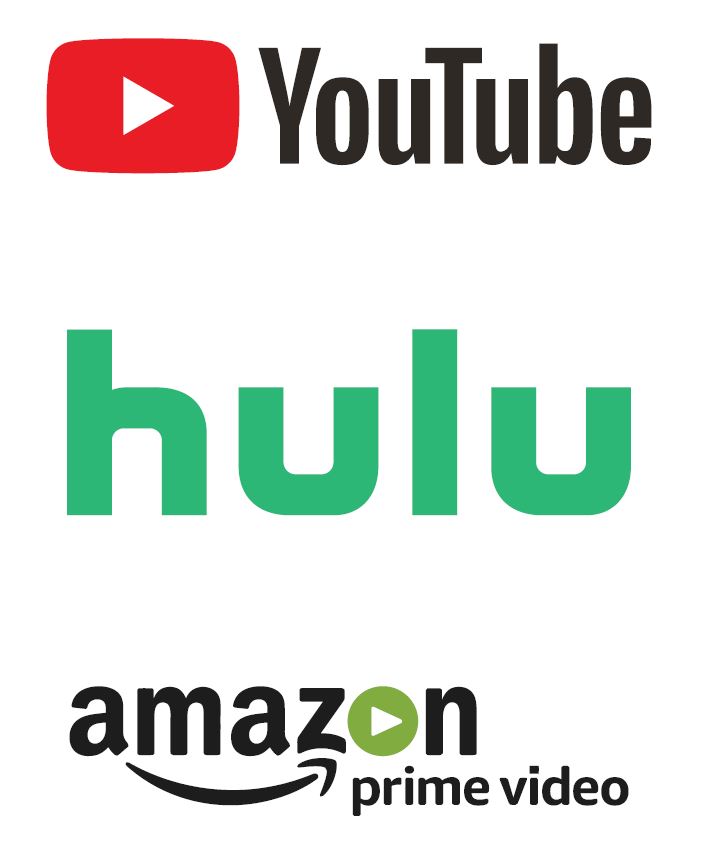Media Companies Say “I Do”
 Disney reached an agreement to acquire Fox, Discovery teamed up with Scripps, and AT&T married Time Warner over a six-month stretch in 2018 that seemed like the media industry’s very own version of a reality-TV speed dating game. With any new relationship comes a grace period where all parties are focused on the good, and from the parent companies’ standpoints, the benefits are evident. Acquiring content creates opportunities for legacy media companies to posture themselves against tech behemoths like Netflix and Amazon. These new relationships give them ownership of video content in addition to the video channels through which they are distributed. Consolidation means standardization and bigger, better platform opportunities. But what does this mean for advertisers?
Disney reached an agreement to acquire Fox, Discovery teamed up with Scripps, and AT&T married Time Warner over a six-month stretch in 2018 that seemed like the media industry’s very own version of a reality-TV speed dating game. With any new relationship comes a grace period where all parties are focused on the good, and from the parent companies’ standpoints, the benefits are evident. Acquiring content creates opportunities for legacy media companies to posture themselves against tech behemoths like Netflix and Amazon. These new relationships give them ownership of video content in addition to the video channels through which they are distributed. Consolidation means standardization and bigger, better platform opportunities. But what does this mean for advertisers?
There are three key impacts that advertisers should be aware of as mergers and acquisitions continue to sweep the media industry.
- Some favorite TV programming will have a new home.
- Legacy media companies will look to launch direct-to-consumer streaming opportunities.
- Pricing will increase, as parent companies look to close profit margins between the newly united networks.
It’s no longer enough for media companies to specialize in either content or distribution – they must become experts in both. Ownership of content is the only way to be relevant in the future of this industry.
Advertisers will need to respond in-step with these changes, remaining nimble in their buying approach to maintain reach among consumer targets. However, with progress comes premiums, and advertisers should expect to see increases to their video advertising budgets as a result.
New Home for Content
In addition to the record number of media mergers this past year[1], networks are making strategic programming decisions based on content ownership as they look to compete with streaming giants like Netflix. The critically acclaimed Brooklyn Nine-Nine (produced by Universal TV, a studio under the Comcast/NBC umbrella) was cut by FOX this past May only to be scooped up by NBC the next day.[2] Similarly, FOX picked up Last Man Standing (produced by 20th Century Fox) a year after ABC cancelled the program.[3] Working with sister studios reduces production costs and makes network-owned shows more profitable and, therefore, more appealing to the media companies who broadcast them.
Company mergers are also impacting the long-term focus of specific networks. FOX, who reached an agreement to sell 21st Century Fox Inc.’s entertainment assets (including 20th Century Fox studio) to Disney in December 2017, is expected to make a shift away from scripted programming, focusing instead on live programming (sports and news, specifically) in the coming years.[4]
For advertisers, this means we must remain nimble as we seek out consumer targets. Networks that were historically included on buys may be cut from future strategies, and new network consideration will be required. Marketers must adapt to an audience-focused approach for linear TV buying and put less emphasis on the prestige of favorite, historical network partners.
The Netflix Effect
With 60 million US subscribers[5], Netflix’s penetration is comparable to that of a small cable network. Despite this, the company surpassed Disney to become the world’s most valuable media company in June of 2018.[6] If traditional media companies continue to capitalize on their 120 million household penetration[7] and expand their offerings to include subscription-based services of their owned content, they’ll prove a worthy competitor to tech companies.
Armed with new content from the recent mergers, media companies are positioning themselves to launch direct-to-consumer streaming services. With Disney’s acquisition of 21st Century Fox’s entertainment properties[8], they now have a content library ready for the planned 2019 launch of their proprietary streaming service. Disney exclusively owns top movie franchises (Star Wars and X-Men), as well as top-rated cable networks (FX and ESPN). Disney can effectively position themselves against the likes of Netflix and Amazon,[9] all while their ownership stake in Hulu has grown from 30% to 60% as result of the merger.[10]
Similarly, the AT&T acquisition of Time Warner gave AT&T access to a content library that will have future implications on subscription models, especially as mobile streaming continues to rise.[11]
 From an advertising standpoint, marketers should be mindful that while media companies react to the pressures of Netflix, Amazon, and other tech companies, subscriber-based platforms come with limited opportunities for paid advertising. Streaming accounts for 10% of total TV usage,[12] a small amount relative to TV usage in its entirety. And of that 10%, 75% of time spent streaming OTT is made up of the big four – Nextflix, YouTube, Hulu, and Amazon.[13] To break it down further, half of the services offer paid advertising, or roughly 3.75% of total TV usage. This may seem like a nominal amount, but when we’re talking about a $70 billion television[14] advertising industry it equates to over $2 billion, and you can start to see why media companies are reacting with mega-mergers.[15]
From an advertising standpoint, marketers should be mindful that while media companies react to the pressures of Netflix, Amazon, and other tech companies, subscriber-based platforms come with limited opportunities for paid advertising. Streaming accounts for 10% of total TV usage,[12] a small amount relative to TV usage in its entirety. And of that 10%, 75% of time spent streaming OTT is made up of the big four – Nextflix, YouTube, Hulu, and Amazon.[13] To break it down further, half of the services offer paid advertising, or roughly 3.75% of total TV usage. This may seem like a nominal amount, but when we’re talking about a $70 billion television[14] advertising industry it equates to over $2 billion, and you can start to see why media companies are reacting with mega-mergers.[15]
For advertisers, linear TV should remain an important part of strategies for mass-reaching campaigns. Harmelin will continue to monitor new platforms as they arise and new advertising products as they are released by streaming services. Live+Time-shifted TV viewing, however, still accounts 80% of all video being consumed[16], and remains unmatched when it comes to its reach capabilities. This is an important reminder to advertisers that despite the growth and redirection of direct-to-consumer content, TV still reigns supreme and is the best way to secure mass reach for brands.
That Costs What!?
When Discovery Communications bought Scripps Networks Interactive in May of 2018, critics of the deal questioned why two of the most profitable network cable companies would merge.[17] They wondered why Discovery would invest $14.6 billion into Scripps instead of funneling that money into emerging media, like an online streaming service. Discovery, however, saw it as an opportunity to leverage linear TV’s most popular lifestyle networks in inclusion negotiations with skinny bundle, cable and satellite providers.[18] Ultimately, this will help position the future value of the company, but in the short-term market specialists are seeing sticker shock. With less competition, those setting the market rates have more power to define pricing trends, which is having an immediate impact on advertisers.
Discovery went into the 2018-19 Upfront controlling nearly 20 percent of the U.S. ad-supported cable and satellite viewership.[19] The combined Upfront resulted in what is speculated to be the most lucrative ever for a cable portfolio. Lower-rated networks were bundled together around the strongest networks, from not only a brand identity standpoint, but based on historical CPMs. Despite both legacy Scripps and Discovery Communications having had top cable networks, there had been a disparity on how the networks were priced.[20] Network ad sales execs leveraged their new, expanded portfolio to close the gaps and restructured their sales teams to accommodate the new bundled approach.
As network groups merge and restructure, advertisers should expect to see higher rates of change and more bullish pricing negotiations. Harmelin is skilled at executing strategic buys despite difficult market conditions. Developing relationships with network sales executives, understanding the nuances of network selection, and advanced knowledge of how to reach a target audience are necessary skills when navigating this new marketplace. Flexibility to adjust to market conditions by removing or adding networks and/or dayparts to a buy is essential to exceeding client goals in this world of merged-media companies.
The Downside of Mega-Media
Critics of the mergers argue that consolidation breeds greed and laziness, that monopolies on data and content limit the scope of information being delivered to the public, and that only a select few benefit from these media marriages. Through Disney’s acquisition of FOX’s entertainment assets, for example, they will own 50 percent of the North American box office.[21] AT&T, a company with roots as a telephone provider, is now the largest TV distributor, thanks to its ownership of DirecTV. Coupled with Time Warner’s content library and production companies, they now have a controlling stake in content development and dissemination.[22] There is no separation of church and state. What’s more, as a leading phone and internet provider, they have access to innumerable amounts of consumer data which they are able to track and sell for further profit.
History cautions us to be wary of industry monopolies, but change is inevitable. Content ownership is necessary to compete in the future of the media industry. With the backing of venture capitalists in Silicon Valley, tech companies like Netflix, Amazon, Apple and Facebook are investing in talent, movies and TV shows.[23] It may seem drastic to say that if Disney, a 95-year-old company, wants to be around as a media conglomerate in twenty years they need to diversify, but it’s the truth. Netflix is only eleven years old, yet its direct-to-consumer strategy has turned the media industry on its head – pushing the evolution of an industry and driving innovation and convergence.
Conclusion
 Throughout the course of any relationship, change is inevitable – and media mergers are no different. Environments are shaken up as networks strategize to own and distribute content, new direct-to-consumer opportunities emerge as competition from tech companies threatens traditional models, and as advertisers, we’ll have to pay a premium for media as the market shifts and fewer companies own more.
Throughout the course of any relationship, change is inevitable – and media mergers are no different. Environments are shaken up as networks strategize to own and distribute content, new direct-to-consumer opportunities emerge as competition from tech companies threatens traditional models, and as advertisers, we’ll have to pay a premium for media as the market shifts and fewer companies own more.
At Harmelin Media, we believe in the progression of the industry and the importance of developing strategic video plans to temper these adjustments. Advertisers should remain nimble and open to new networks and opportunities to reach target audiences through linear TV. Facilitating new relationships will expand innovation, and ultimately helps achieve our common goal—reaching and developing relationships with consumers.
[1] A Record $2.5 Trillion in Mergers Were Announced in the First Half of 2018
[2] ‘Brooklyn Nine-Nine’ Saved: NBC Picks Up Comedy After Fox Cancellation
[3] ‘Last Man Standing’ Resurrected At Fox For Season 7 With Original Cast Led By Tim Allen
[4] Fox Chiefs: Network Will Carry Entertainment Programming After Disney Split
[5] Netflix Continues to Grow Internationally
[6] It’s Netflix’s World, Disney Just Lives in It
[7] Nielsen Universe Estimates for 2018-19
[8] Disney Officially Owns 21st Century Fox
[9] Disney Buys Much of Fox in Megamerger that will Shake World of Entertainment and Media
[10] Disney gets Shareholder OK to Acquire Fox Movie and TV Studios, and Stake in Hulu
[11] Seven Ways The Time Warner And AT&T Merger Could Affect Marketing As We Know It
[12] Q1 2018 Nielsen Total Audience Report
[13] comScore OTT Intelligence, U.S., April 2018, P2+
[14] US TV Ad Spending to Fall in 2018
[15] Magna: OTT Will Reach $2 Billion In 2018
[16] Q1 2018 Nielsen Total Audience Report, A18+
[17] Discovery’s David Zaslav isn’t Ducking the Future by Looking to buy Scripps — he’s Prioritizing
[18] Discovery Communications To Buy Scripps For $14.6 Billion
[19] Discovery Shakes Up Management Team as Scripps Merger Nears Finish Line
[20] After Wrapping Upfront Talks, Discovery, Inc Restructures Ad Sales Around 12 Top Networks
[21] How Mega-Mergers Are Changing the Way You Watch Your Favorite Shows and Movies
[22] Why the Media Mega-Mergers Won‘t Benefit You and Me
[23] How Mega-Mergers Are Changing the Way You Watch Your Favorite Shows and Movies





